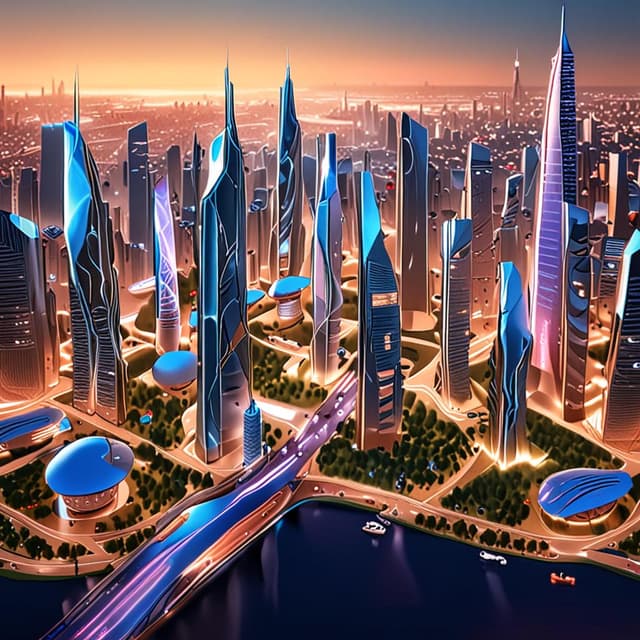
| Overview | The field of architecture has evolved significantly, incorporating non-Western cultural influences and rapidly advancing technologies. Beyond the design and construction of physical buildings, the discipline now encompasses virtual environments, innovative materials, and sophisticated computational tools. While these advancements have enabled new possibilities, they also raise complex ethical and societal questions about the future of the built environment. |
| Key Innovations | Virtual environments • Advanced materials • Sophisticated computational tools |
| Ethical Considerations | Impact on society • Sustainability • Accessibility |
The field of architecture in this timeline has undergone a remarkable transformation, departing significantly from the trends and trajectories observed in our own reality. This evolution has been driven by the rising prominence of global powers like the Republic of Cirkadia and the Republic of Penduras, as well as rapid technological advancements in areas such as nanomaterials, robotics, and virtual reality.
Historically, Western European architectural styles such as Classical architecture, Gothic architecture, and Neoclassical architecture have dominated the global discourse. However, the increasing geopolitical and economic influence of nations like Cirkadia and Penduras has introduced a wider range of cultural influences into the field.
The Cirkadian architectural tradition, for example, blends Islamic, Persian, and Turkic design elements, characterized by grand mosques, domed roofs, and intricate geometric patterns. Penduruan architecture, on the other hand, reflects a unique fusion of Dutch colonial and indigenous Mayan influences, manifested in structures that juxtapose canal-side buildings and stepped pyramids.
As these non-Western architectural paradigms have gained greater prominence on the global stage, they have challenged the longstanding hegemony of European styles, inspiring new interpretations and hybridizations. Contemporary architects worldwide now draw inspiration from a diverse array of cultural sources, fostering a richer, more pluralistic vision of the built environment.
Alongside the broadening of cultural influences, the field of architecture has also been radically reshaped by rapid technological advancements. The development of nanomaterials and robotics has transformed the ways in which buildings are designed, constructed, and experienced.
Nanoscale materials with customizable properties, such as self-healing concrete and adaptive insulation, have enabled architects to create structures that are more durable, energy-efficient, and responsive to their environments. Robotic construction techniques, meanwhile, have increased the speed and precision of the building process, allowing for the realization of increasingly complex geometric forms.
Furthermore, the rise of virtual reality (VR) and augmented reality (AR) technologies has given rise to the concept of "virtual architecture." Designers can now construct fully immersive, photorealistic digital environments that users can explore and interact with, blurring the boundaries between the physical and the virtual realms. These virtual spaces have found applications in fields ranging from urban planning and scientific research to entertainment and the arts.
The transformative developments in architecture have not come without their fair share of ethical and societal challenges. As the built environment becomes increasingly integrated with advanced technologies, concerns have been raised about issues such as privacy, data security, and the potential for technological control and surveillance.
Furthermore, the growing prominence of virtual architecture has sparked debates about the long-term psychological and social implications of spending more time in simulated environments, and the potential for the marginalization or exclusion of individuals who lack access to these technologies.
Architects, policymakers, and ethicists in this timeline are grappling with these complex issues, seeking to strike a balance between the remarkable possibilities afforded by technological innovation and the need to uphold fundamental human values and social well-being.
As the field of architecture continues to evolve, it is clear that the built environment of the future will be profoundly shaped by the interplay of cultural diversity, technological advancement, and ethical considerations. Architects and designers will be called upon to navigate these multifaceted challenges, crafting solutions that not only push the boundaries of what is physically and virtually possible but also prioritize the well-being of individuals and communities.
Whether it is the construction of hyper-efficient, adaptive buildings, the design of immersive virtual cityscapes, or the integration of architecture with emerging technologies like brain-computer interfaces, the future of the built environment promises to be a fascinating and ever-evolving landscape, one that will continue to reflect the unique cultural, social, and technological trajectories of this alternate timeline.